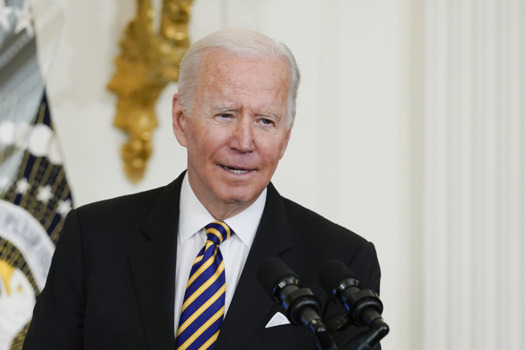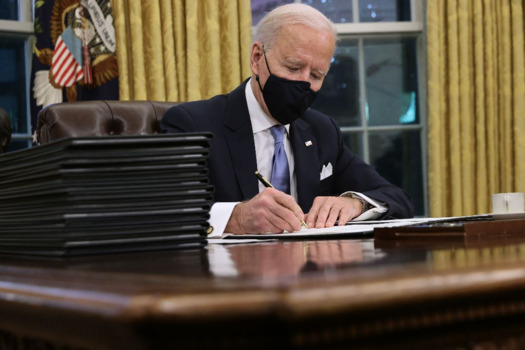Analysis of Biden's measures to curb oil prices
 2022-10-25
2022-10-25
 1154
1154
Last week, Biden announced three new measures on oil prices, which may further strengthen the pattern of wide fluctuations in crude oil prices.
- Extend the release time of strategic reserve inventory to December, non-additional increments have limited impact on short-term oil prices. However, it is not ruled out that additional inventory will continue to be placed in the future, which will limit the upward space for oil prices in the medium term.
- Determine the strategic inventory repurchase price range of $67-72 per barrel. It will provide strong bottom support when oil prices fall to this range in the future.
- It is meaningless to call on oil companies to consciously make profits. The above new measures have no major revision to the logic of oil prices.
1. What new measures has Biden launched on oil prices?
On October 19, Biden delivered a speech at the White House and announced three new measures on oil prices. First, the Department of Energy will conduct 15 million barrels of strategic reserve crude oil inventory sales in December to complete the 180 million barrels strategic inventory release plan announced in March. In the event of supply disruptions in winter due to Russia or other reasons, additional stocks will be placed. Second, the government plans to conduct strategic inventory repurchases when crude oil prices fall below $67-72 a barrel. The Energy Department is working on rules that could lock in forward purchase contracts through fixed-price bidding to encourage oil companies to ramp up crude production immediately. Again, call on US oil companies to benefit consumers. Lower refinery gasoline production profits and traders retail profits above historical averages. At the same time, in his speech, he asked oil companies to reduce dividends and stock buybacks to investors, and use profits for investment and production.

2. How long will the U.S. strategic crude oil inventories last?
After OPEC's oil embargo against Western countries in 1973 led to the first oil crisis, developed countries established the International Energy Agency, requiring member countries to reserve at least 60-days' worth of strategic reserve crude oil inventories. In 1975, the U.S. Congress passed the Energy Policy and Reserve Act, which authorized the Department of Energy to build a strategic petroleum reserve system. According to the bill, when there is a serious supply disruption caused by factors such as war, the inventory can be fully used; when there is a large-scale disruption, no more than 30 million barrels of inventory can be put in for no more than 60 days, and it cannot continue when it is less than 500 million barrels. put. On March 1, 2022, Biden announced the release of 30 million barrels of inventory; on March 30, he announced the release of 180 million barrels of inventory in the next 6 months on the grounds of the Ukraine war. So far, 165 million barrels have been released. In September, it was announced that an additional 10 million barrels would be injected in November. The latest announcement of the 15 million barrels released in December is the unfinished part of the previous 180 million barrels, which is equivalent to extending the delivery time. As of October 14, the US strategic reserve inventory was 405 million barrels, about 22 days of consumption; it was already below the 30-day alert level. According to the current delivery schedule, there will be 378 million barrels remaining in the U.S. strategic reserve by the end of December; if the rate is still 1 million barrels per day next year, it will only be enough for 10 months.

3. What impact will Biden's measures have on oil prices?
Specifically, the three measures announced this time are as follows:
1) The 15 million barrels released in December was the unfinished part of the original plan, and there was no additional increase in essence, so the short-term impact is not large. But you need to pay attention to whether there will be additional delivery in the future. The Energy Department said it will decide next month how much to put in reserve inventories next January. If the U.S. adjusts the amount of strategic inventories on a monthly basis, it will form a hedging effect with OPEC's monthly adjustment of production quotas, which will weaken the support of OPEC's production cuts to oil prices to a certain extent. However, because the current US strategic inventory is already at an extremely low level, it is difficult to continue to put it in for a long time, and the medium-term effect is limited.
2) The strategic inventory repurchase plan is a supplement and improvement to the repurchase mechanism initially formulated in May. The target price range of 67-72 US dollars / barrel determined this time will provide strong bottom support when oil prices fall to this range in the future. At present, future purchase intentions are determined through bidding, but the actual delivery time is after 2024 to 2025, so the effect of boosting short-term crude oil production and demand is limited.
3) It is difficult to form a spontaneous response by calling on oil companies to consciously reduce profit levels and terminal sales prices. In the follow-up, we need to pay attention to whether the policy of banning gasoline and diesel exports that Biden has recently promoted can be implemented. It is unlikely that it will be implemented before the mid-term elections. If it is implemented in the future, it will be negative for domestic refined oil prices in the United States and bullish for international refined oil prices; at that time, we need to pay attention to whether China will increase refined oil exports to make up for the reduction in US exports. Judging from the reaction of oil prices, since last week Biden had announced that new measures will be announced this week, the market has certain leading expectations. Crude oil prices fell short-term before the specific plan was announced on Tuesday, but rebounded slightly after the official announcement on Wednesday, possibly due to an assessment of the lack of substance of the new measures. In general, only the above three measures have little impact on short-term oil price sentiment and supply and demand, but we need to pay attention to the possibility of more measures in the future and the additional impact on oil prices at that time.

The above information is provided by special analysts and is for reference only. CM Trade does not guarantee the accuracy, timeliness and completeness of the information content, so you should not place too much reliance on the information provided. CM Trade is not a company that provides financial advice, and only provides services of the nature of execution of orders. Readers are advised to seek relevant investment advice on their own. Please see our full disclaimer.

CM Trade
As a world leading financial trading platform, CMtrade Provides comprehensive one-stop trading services and opportunities for traders.
[Products]
The platform provides over 32 kinds of popular financial products such as forex, precious metals, crude oil, indices, cryptocurrencies and more.
[System]
2 top trading systems CM Trade MT4 / CM Trade APP, powerful and easy to operate
[Service]
Comprehensive market news, professional market analysis, 7*24 hours online customer service
[Advantage]
Low cost, high leverage, flexible one-stop all day two-way trading.
[Authority]
Licensed and strictly regulated by authorities. Traders deposits are independently kept by the bank. Fast deposit and withdrawal. Fair, efficient and transparent trading environment.
CM Trade Mobile Application
Economics Calendar
MoreYou May Also Like



 简体中文
简体中文
 ภาษาไทย
ภาษาไทย
 繁體中文
繁體中文
 Indonesia
Indonesia











